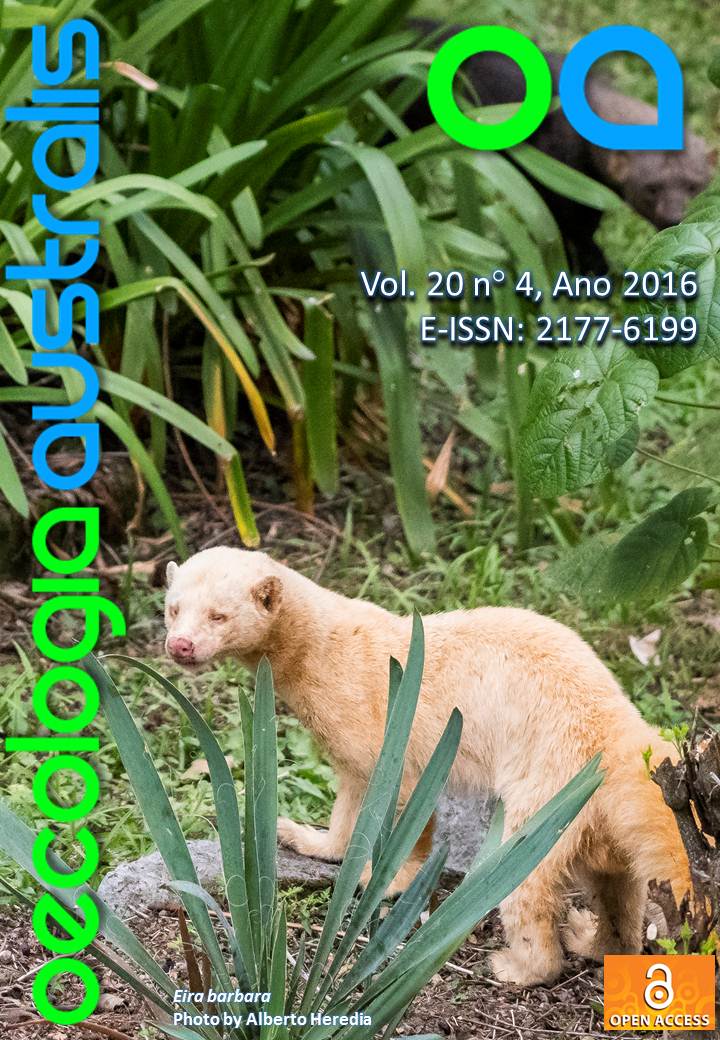ANÁLISE COMPARATIVA DA COMUNIDADE DE AVES EM ÁREAS DE MATA ATLÂNTICA NO SUL DO BRASIL
DOI:
https://doi.org/10.4257/oeco.2016.2004.07Palavras-chave:
Comunidade de aves, Mata ciliar, Fragmentação, Conservação, Floresta Estacional SemidecidualResumo
The present study aimed to evaluate the structure of the avifauna in Semideciduous Forest areas in southern Brazil. The survey was conducted in Bacia do Rio dos Sinos between March 2007 and March 2008. We used the point counts method with radius of 25 m in order to calculate the species abundance and richness in the region. Four areas of Semideciduous Forest were sampled: two in a secondary riparian forest, one area in a secondary forest fragment and one area characterized by wetlands and open areas. One hundred and thirty seven bird species were registered, which represents approximately 20% of the species found in Rio Grande do Sul. There was no significant difference between the species richness among the sampled areas, however there were differences in the species composition. The secondary forest fragment area presented a distinct species composition from the other areas, and the greatest species richness with specialized habitats, medium sensitivity and forest-dependency. The secondary riparian forest areas, due to the similarity in habitat degradation, showed similar species composition, which many of the recorded species are common, generalist and well distributed in the State, while the open area presented species associated with open and/or wetland environments. The record of many habitat sensitive species, such as Triclaria malachitacea, Piculus aurulentus, Carpornis cucullata and Euphonia chalybea, shows that the region has potential for conservation.Downloads
Arquivos adicionais
Publicado
2017-02-24
Edição
Seção
Artigos


